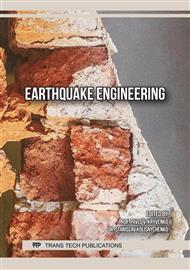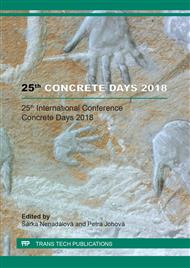p.102
p.108
p.114
p.123
p.128
p.134
p.140
p.146
p.153
Modeling of Interaction between the Bridge Girder and Piers with the Use of Commercial Software
Abstract:
Creating an analytical model for a bridge structure is one of the most challenging engineering tasks. For the design of all supporting elements and in all design situations., It is often necessary to create several models. One of the common modeling problems is related to the area between the bridge girder and piers. A Correct representation of the upper and lower structure interaction is particularly important in case of seismic design and the subsequent design of the piers. With a suitably built analytical model, it is possible to significantly reduce the horizontal effects from the upper structure and consequently, to reduce the shear strain of the piers. This contribution discusses the particularities of designing and modeling of bridges with elastomeric bearings. Further follows the description of the main methods for designing such structural elements in three commonly available commercial software based on the Finite Element Methods, hereinafter referred to as FEM. At the end of the paper the individual software options are compared.
Info:
Periodical:
Pages:
128-133
Citation:
Online since:
June 2019
Authors:
Keywords:
Price:
Сopyright:
© 2019 Trans Tech Publications Ltd. All Rights Reserved
Share:
Citation:



